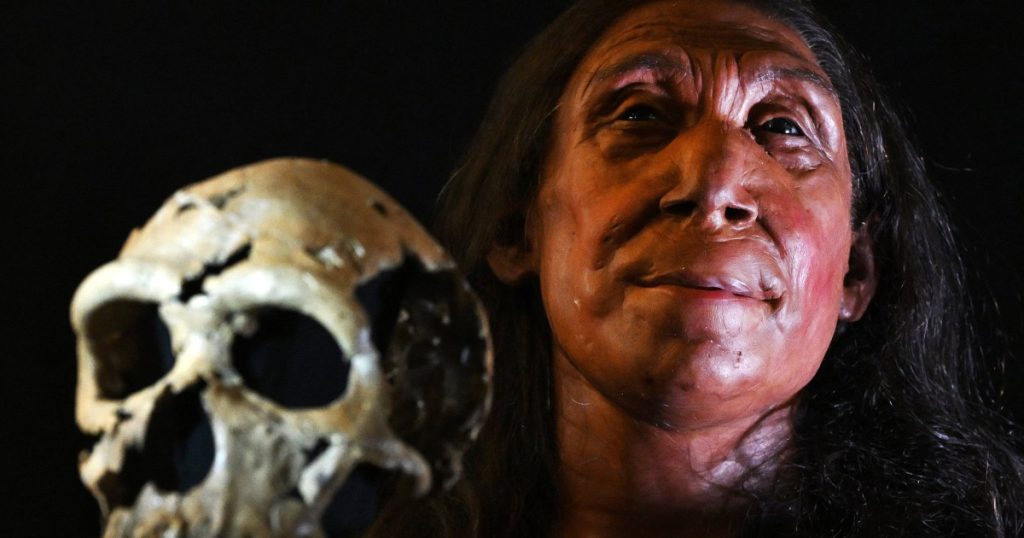Archaeologists at England’s University of Cambridge have recreated the face of Shanidar Z, a 75,000-year-old Neanderthal woman whose skull was smashed into 200 pieces before being pieced back together. By reconstructing her facial features, experts have gained new insights into the appearance and similarities between Neanderthals and humans. Despite differences in skull structure, the recreated face suggests that these differences were not as stark in life, potentially explaining why interbreeding occurred between the two species.
Neanderthals, a species of early humans that lived alongside Homo sapiens, were shorter and stockier with large noses suited for the areas they inhabited. However, their brains were relatively large, similar in size or larger compared to their bodies. Shanidar Z was found in a cave in Iraqi Kurdistan, one of 10 Neanderthals discovered at this iconic site. This discovery sheds light on the burial practices of Neanderthals, confirming that they buried some of their dead based on findings at this cave and prompting further investigation into the cultural behaviors of different groups.
The reconstruction of Shanidar Z’s face was a meticulous process involving the piecing together of 200 bone fragments, which were soft and fragile. The glued bone fragments were then CT scanned, reconstructed freehand, and eventually 3D printed to allow for the building of layers of muscle and skin by renowned experts in paleoarchaeology. Despite only half of Shanidar Z’s remains being found, her sex was determined using tooth enamel proteins. The discovery site near Erbil in Iraq includes a significant vertical rock, believed to have been a landmark for this burial site, highlighting the Neanderthals’ potentially deeper understanding of death.
The excavation at the cave in Iraqi Kurdistan has been described as one of the most significant modern paleoanthropology projects and has settled long-standing debates about Neanderthal burial practices. The facial reconstruction of Shanidar Z was considered a focal image for the broader scientific discoveries made at the site. With the help of modern technology and expert analysis, the recovered Neanderthal remains offer valuable insights into the appearance, lifestyle, and cultural behaviors of these ancient relatives.
The facial reconstruction of Shanidar Z not only provides a visual representation of a Neanderthal individual but also contributes to our understanding of the species’ interactions with Homo sapiens and their cultural practices. The meticulous process of piecing together the shattered skull, CT scanning, and reconstructing Shanidar Z’s face sheds light on the techniques used by experts to analyze ancient remains. Ultimately, this research contributes to a broader narrative of human evolution and the complexities of our shared history with Neanderthals.


